
Allele frequencies in populations and how they differ from genotype frequencies. Created by Sal Khan.
- Subject:
- Biology
- Life Science
- Material Type:
- Lesson
- Provider:
- Khan Academy
- Provider Set:
- Khan Academy
- Author:
- Sal Khan
- Date Added:
- 06/23/2014

Allele frequencies in populations and how they differ from genotype frequencies. Created by Sal Khan.
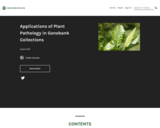
The eBook “Applications of Plant Pathology in Genebank Collections” was developed in part by USDA-ARS and by grant 2020-70003-30930 from the USDA-NIFA-Higher Education Challenge Grant Program. Additional chapters will be added to this eBook when they are available. This eBook contains chapters that can be accessed in any order. Click on “Contents” in the upper left corner and then expand “Main Body” to access chapter titles; scrolling may be necessary to view all chapter titles. Chapters can also be navigated by using arrows at the bottom of each page. Each chapter has text, video and/or interactive content on a single page.

Using the Hardy-Weinberg equation to calculate allele and genotype frequencies. Created by Sal Khan.

How humans have shaped plants and animals through artificial selection and domestication.
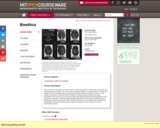
" This course does not seek to provide answers to ethical questions. Instead, the course hopes to teach students two things. First, how do you recognize ethical or moral problems in science and medicine? When something does not feel right (whether cloning, or failing to clone) ŰÓ what exactly is the nature of the discomfort? What kind of tensions and conflicts exist within biomedicine? Second, how can you think productively about ethical and moral problems? What processes create them? Why do people disagree about them? How can an understanding of philosophy or history help resolve them? By the end of the course students will hopefully have sophisticated and nuanced ideas about problems in bioethics, even if they do not have comfortable answers."

Biology is designed for multi-semester biology courses for science majors. It is grounded on an evolutionary basis and includes exciting features that highlight careers in the biological sciences and everyday applications of the concepts at hand. To meet the needs of today’s instructors and students, some content has been strategically condensed while maintaining the overall scope and coverage of traditional texts for this course. Instructors can customize the book, adapting it to the approach that works best in their classroom. Biology also includes an innovative art program that incorporates critical thinking and clicker questions to help students understand—and apply—key concepts.

Biology is the science that studies life, but what exactly is life? This may sound like a silly question with an obvious response, but it is not always easy to define life. For example, a branch of biology called virology studies viruses, which exhibit some of the characteristics of living entities but lack others. It turns out that although viruses can attack living organisms, cause diseases, and even reproduce, they do not meet the criteria that biologists use to define life. Consequently, virologists are not biologists, strictly speaking. Similarly, some biologists study the early molecular evolution that gave rise to life; since the events that preceded life are not biological events, these scientists are also excluded from biology in the strict sense of the term. From its earliest beginnings, biology has restled with these questions: What are the shared properties that make something “alive”? And once we know something is alive, how do we find meaningful levels of organization in its structure?

This 28-minute video lesson provides an introduction to DNA. [Biology playlist: Lesson 6 of 71].
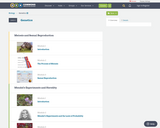

By the end of this section, you will be able to:Explain the relationship between genotypes and phenotypes in dominant and recessive gene systemsDevelop a Punnett square to calculate the expected proportions of genotypes and phenotypes in a monohybrid crossExplain the purpose and methods of a test crossIdentify non-Mendelian inheritance patterns such as incomplete dominance, codominance, recessive lethals, multiple alleles, and sex linkage

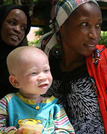
By the end of this section, you will be able to:Explain Mendel’s law of segregation and independent assortment in terms of genetics and the events of meiosisUse the forked-line method and the probability rules to calculate the probability of genotypes and phenotypes from multiple gene crossesExplain the effect of linkage and recombination on gamete genotypesExplain the phenotypic outcomes of epistatic effects between genes
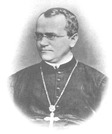
By the end of this section, you will be able to:Describe the scientific reasons for the success of Mendel’s experimental workDescribe the expected outcomes of monohybrid crosses involving dominant and recessive allelesApply the sum and product rules to calculate probabilities
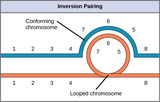
By the end of this section, you will be able to:Describe how a karyogram is createdExplain how nondisjunction leads to disorders in chromosome numberCompare disorders caused by aneuploidyDescribe how errors in chromosome structure occur through inversions and translocations
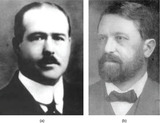
By the end of this section, you will be able to:Discuss Sutton’s Chromosomal Theory of InheritanceDescribe genetic linkageExplain the process of homologous recombination, or crossing overDescribe how chromosome maps are createdCalculate the distances between three genes on a chromosome using a three-point test cross

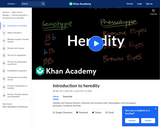
This 17-minute video lesson provides an introduction to heredity and classical genetics. It looks at dominant and recessive traits as well as heterozygous and homozygous genotypes. [Biology playlist: Lesson 14 of 71].

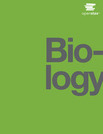
This course is the introduction to the ... Biology is designed for multi-semester biology courses for science majors. It is grounded on an evolutionary basis and includes exciting features that highlight careers in the biological sciences and everyday applications of the concepts at hand. To meet the needs of today’s instructors and students, some content has been strategically condensed while maintaining the overall scope and coverage of traditional texts for this course. Instructors can customize the book, adapting it to the approach that works best in their classroom. Biology also includes an innovative art program that incorporates critical thinking and clicker questions to help students understand—and apply—key concepts.

Biology is designed for multi-semester biology courses for science majors. It is grounded on an evolutionary basis and includes exciting features that highlight careers in the biological sciences and everyday applications of the concepts at hand. To meet the needs of today’s instructors and students, some content has been strategically condensed while maintaining the overall scope and coverage of traditional texts for this course. Instructors can customize the book, adapting it to the approach that works best in their classroom. Biology also includes an innovative art program that incorporates critical thinking and clicker questions to help students understand—and apply—key concepts.